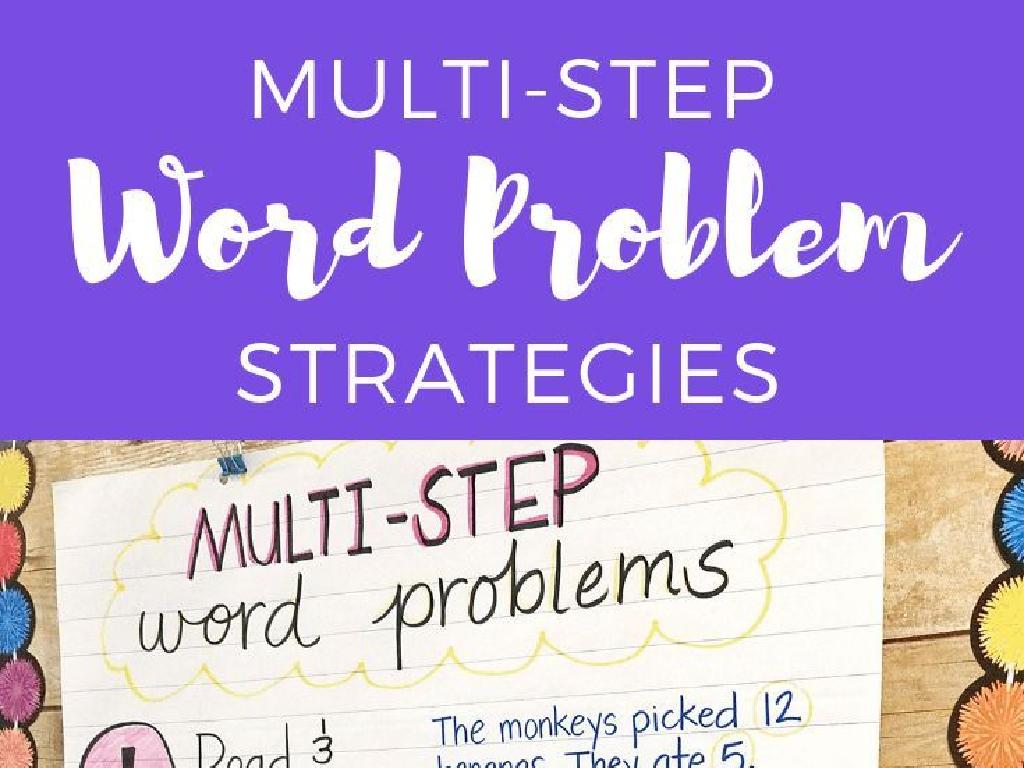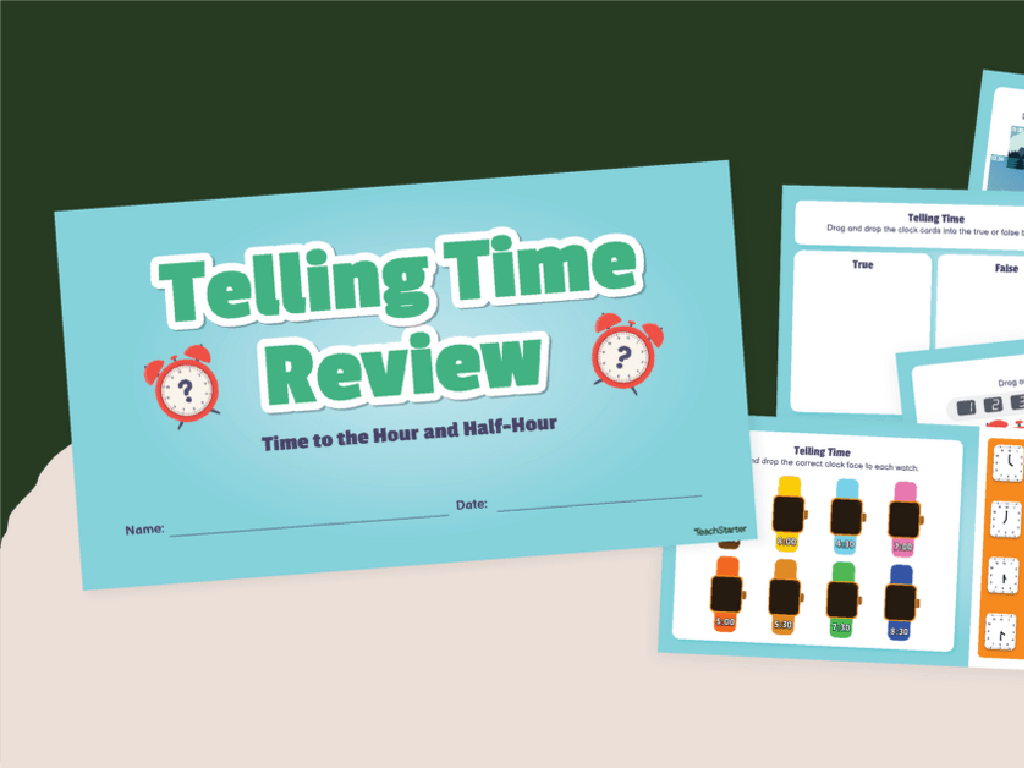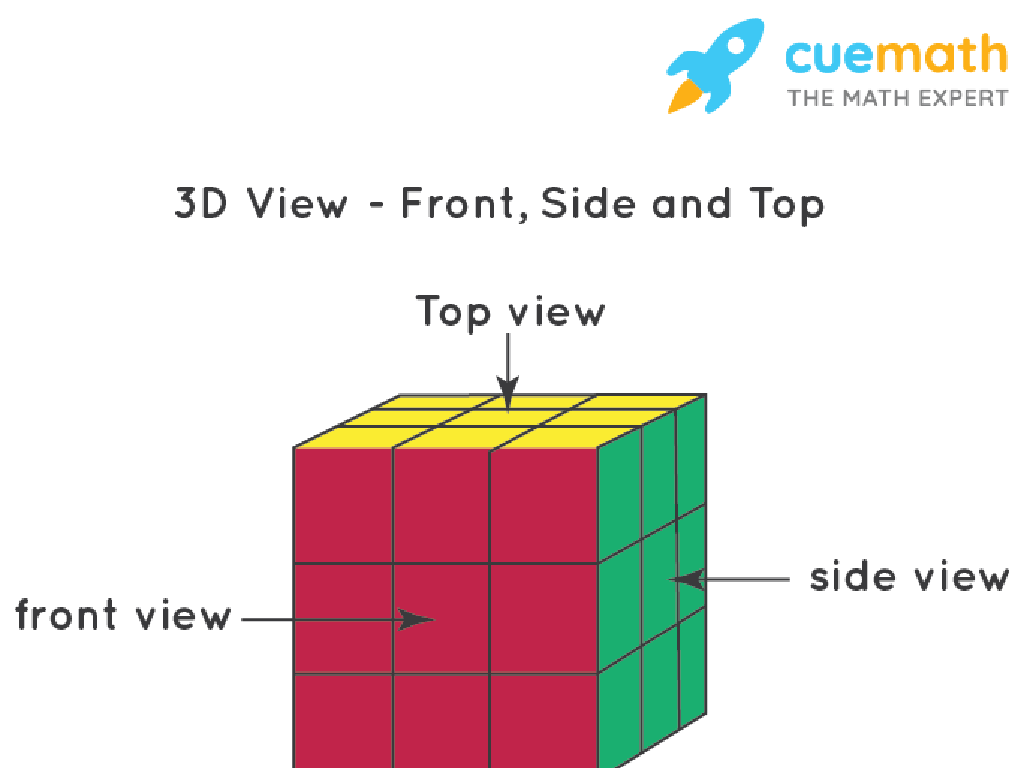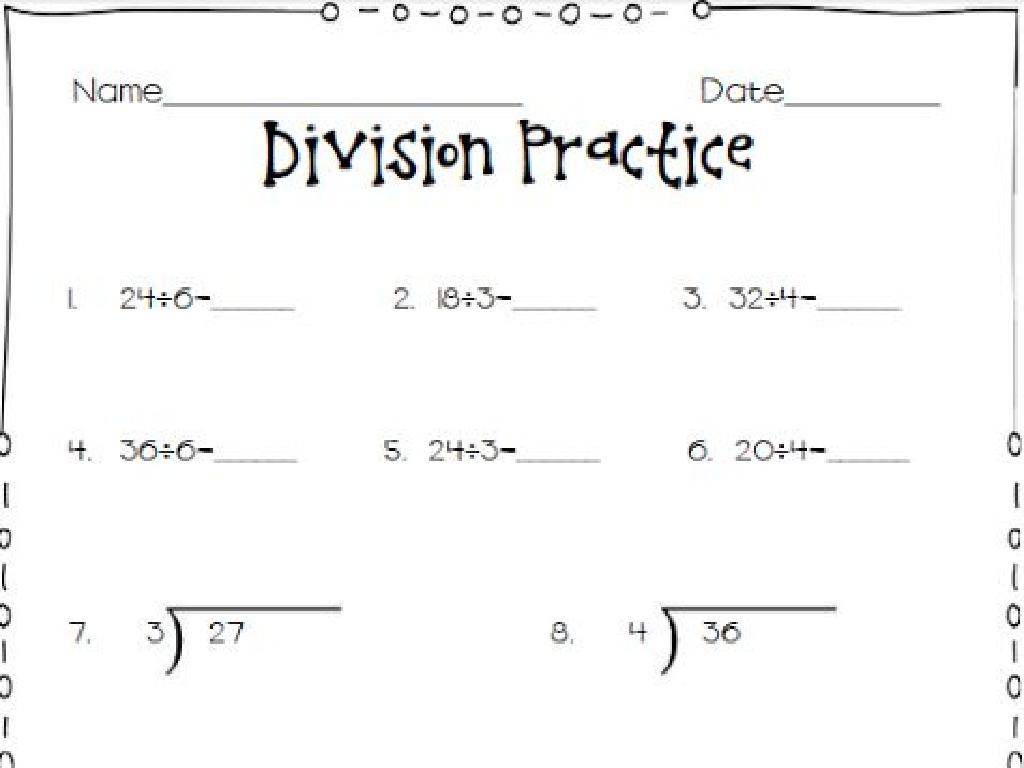Volume Of Cylinders
Subject: Math
Grade: Seventh grade
Topic: Surface Area And Volume
Please LOG IN to download the presentation. Access is available to registered users only.
View More Content
Exploring Volume: Introduction to 3D Shapes
– Understanding 3D shapes
– Objects with length, width, and height
– Defining volume
– Space occupied by an object, measured in cubic units
– Volume’s role in daily life
– Used in cooking, packing, filling pools, etc.
– Calculating cylinder volume
– Use formula V = Àr²h where r is radius and h is height
|
This slide introduces students to the concept of volume within the context of three-dimensional shapes. Begin by explaining that 3D shapes have length, width, and height, unlike 2D shapes which only have length and width. Volume is the measure of how much space an object occupies, and it’s a concept that students encounter in everyday life, such as when measuring ingredients for a recipe or determining how much water is needed to fill a swimming pool. Emphasize the practicality of understanding volume and conclude by introducing the formula for the volume of a cylinder, which will be a key focus of this unit. Encourage students to think of cylinders they encounter daily to make the concept more relatable.
Exploring Cylinders: Volume Calculation
– Define a cylinder
– A 3D shape with two parallel circular bases
– Cylinders in the real world
– Pipes, cans, and batteries are everyday cylindrical objects
– Cylinder’s base and height
– The base is the circle, height is the distance between bases
– Calculating cylinder volume
– Volume = À × radius² × height
|
This slide introduces students to the concept of cylinders, a fundamental shape in geometry. Start by defining a cylinder as a three-dimensional shape with two parallel circular bases connected by a curved surface. Provide relatable examples such as pipes, cans, and batteries to help students identify cylinders in everyday life. Explain the components of a cylinder, emphasizing the base as the circular area and the height as the perpendicular distance between the bases. Conclude by showing the formula for calculating the volume of a cylinder, which is the product of the area of the base (À times the radius squared) and the height of the cylinder. Encourage students to visualize the components by looking at real-world cylindrical objects and to practice calculating volume with different examples.
Volume of Cylinders
– Cylinder volume formula: V = Àr²h
– The formula calculates the space inside a cylinder
– Dissecting the formula components
– À is a constant approx. 3.14, r is the cylinder’s radius, and h is its height
– Pi (À): Understanding its role
– Pi (À) is the ratio of circumference to diameter of any circle
– Radius (r) and Height (h) significance
– Radius is half the diameter; height is the distance between bases
|
This slide introduces the mathematical concept of calculating the volume of cylinders, a key topic in geometry. The formula V = Àr²h encapsulates the relationship between a cylinder’s physical dimensions and its volume. Begin by explaining each component of the formula: À (Pi) is a mathematical constant representing the ratio of a circle’s circumference to its diameter, r (radius) is the distance from the center of the cylinder’s base to its edge, and h (height) is the measure from one base to the other. Emphasize the importance of understanding these elements and their interplay to accurately compute the volume. Provide examples of cylinders in real life, such as cans or pipes, to help students visualize the concept.
Calculating the Volume of Cylinders
– Step-by-step volume example
– Use formula V = Àr²h, where V is volume, r is radius, and h is height.
– Practice Problem 1
– Calculate volume for a cylinder with r=3cm, h=5cm.
– Practice Problem 2
– Find the volume for r=2cm, h=10cm.
|
This slide is aimed at teaching students how to calculate the volume of cylinders. Start with a clear step-by-step example using the formula V = Àr²h. Make sure to explain each component of the formula: V for volume, r for the radius of the cylinder’s base, and h for the height of the cylinder. Work through the first practice problem as a class, guiding students through the process of plugging the given values into the formula. For the second problem, encourage students to try on their own before reviewing the solution together. This practice will help solidify their understanding of the concept. Remember to remind students that À (pi) is approximately 3.14 or can be used as À on a calculator for more precision.
Comparing Volumes: Cylinder Dimensions
– Effect of dimension changes
– Altering radius or height changes volume.
– Short & wide vs. tall & narrow
– Compare cylinders with different shapes but same volume.
– Group discussion activity
– Which cylinder holds more?
– Predictions before calculating actual volume.
|
This slide aims to explore how the volume of a cylinder is affected by changes in its dimensions. Students will compare cylinders of different shapes to understand that cylinders can have the same volume even if their dimensions vary. The group discussion will involve students making predictions about which cylinder holds more based on their intuition, followed by calculations to confirm or refute their hypotheses. This activity will help students grasp the concept of volume and its dependency on the dimensions of the shape. Encourage students to think critically about the relationship between the height and radius of a cylinder and how these dimensions influence the volume. Provide examples of cylinders with the same volume but different dimensions to illustrate this point effectively.
Real-Life Applications of Cylinder Volume
– Measuring ingredients in the kitchen
– Chefs use volume for recipes: cups, teaspoons, etc.
– Volume calculations in engineering
– Engineers design using volume for materials
– Environmental impact of volume
– Volume helps in waste management and resource conservation
– Discuss how volume is used daily
|
This slide aims to show students the practical applications of understanding the volume of cylinders in everyday life. In the kitchen, chefs and bakers measure ingredients by volume, using units like cups and teaspoons, which are often based on the volume of cylindrical containers. In engineering, understanding volume is crucial for material selection, cost estimation, and design of structures. Environmental applications include calculating the volume of containers for waste management and understanding how much space is needed for conservation efforts. Encourage students to think of other ways volume measurements are essential in their daily lives and the impact of these calculations on the environment.
Class Activity: Measure and Calculate Volume
– Gather materials: tape, calculator
– Choose 3 cylindrical objects
– Measure object dimensions
– Record the height and diameter
– Calculate each object’s volume
– Use formula V = Àr²h for volume
|
This hands-on activity is designed to help students apply their knowledge of volume calculation to real-world objects. Provide students with measuring tapes and calculators. They should select three cylindrical objects in the classroom, such as a cup, a can, and a jar. Students will measure the height and diameter of each object, calculate the radius, and then use the formula for the volume of a cylinder (V = Àr²h) to find the volume. Encourage students to double-check their measurements and calculations. Possible variations of the activity could include comparing volumes of similar objects, estimating volume before measuring, or finding objects with the same volume but different dimensions. This activity will reinforce the concept of volume and provide a practical understanding of how it’s calculated.
Review: Volume of Cylinders
– Recap cylinder volume formula
Volume = Àr²h, where r is radius and h is height
– Open floor for questions
– Tips to remember the formula
Use mnemonic devices or relate to real-life objects
– Practice problem example
Calculate volume for a cylinder with r=3cm, h=5cm
|
Begin the slide by recapping the formula for the volume of a cylinder, emphasizing the importance of understanding each component of the formula (À, r, and h). Allow students to ask any questions they have about the concept to clarify their doubts. Share tips for remembering the formula, such as creating a catchy mnemonic or relating the formula to familiar cylindrical objects like cans. Conclude with a practice problem to apply the formula, reinforcing the learning objective. This interactive review session will help solidify students’ understanding and prepare them for applying the concept in various contexts.
Homework: Mastering Cylinder Volume
– Complete the practice worksheet
– Find home objects shaped like cylinders
– Examples: a can of soup, a candle, a water bottle
– Calculate the volume of each object
– Use formula V = Àr^2h, measure the radius (r) and height (h)
– Study for the upcoming quiz
|
This homework assignment is designed to reinforce the concept of volume of cylinders. The worksheet provides structured practice problems to help students apply the formula for volume. Encouraging students to find cylindrical objects around their home makes the learning experience tangible and practical. They should measure the dimensions of these objects and apply the formula V = Àr^2h to calculate volume. This hands-on activity will prepare them for the quiz in the next class, where they will demonstrate their understanding of the concept. As a teacher, be ready to review the formula in the next class and discuss common mistakes or misconceptions before the quiz.





